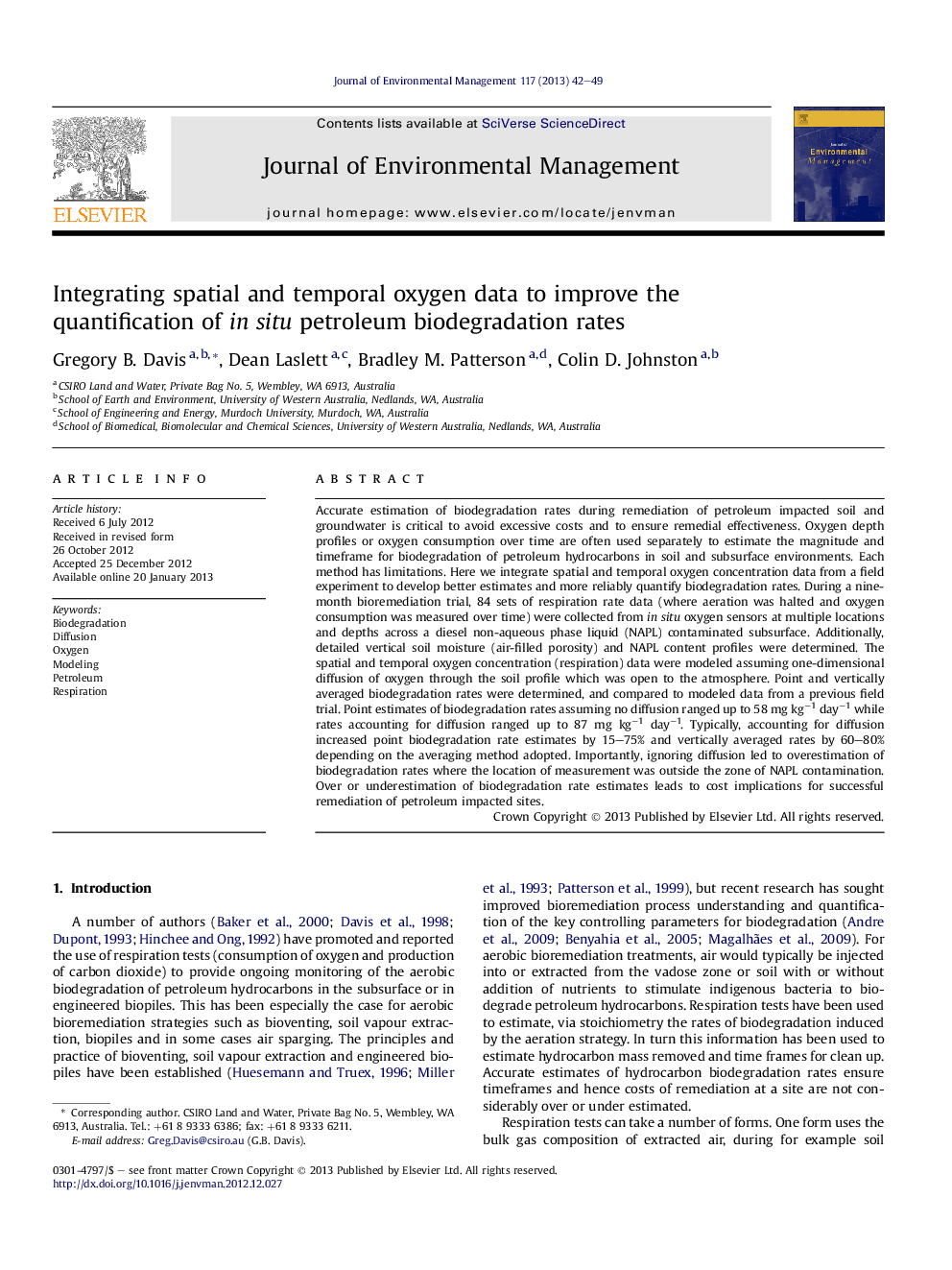| Article ID | Journal | Published Year | Pages | File Type |
|---|---|---|---|---|
| 1056299 | Journal of Environmental Management | 2013 | 8 Pages |
Accurate estimation of biodegradation rates during remediation of petroleum impacted soil and groundwater is critical to avoid excessive costs and to ensure remedial effectiveness. Oxygen depth profiles or oxygen consumption over time are often used separately to estimate the magnitude and timeframe for biodegradation of petroleum hydrocarbons in soil and subsurface environments. Each method has limitations. Here we integrate spatial and temporal oxygen concentration data from a field experiment to develop better estimates and more reliably quantify biodegradation rates. During a nine-month bioremediation trial, 84 sets of respiration rate data (where aeration was halted and oxygen consumption was measured over time) were collected from in situ oxygen sensors at multiple locations and depths across a diesel non-aqueous phase liquid (NAPL) contaminated subsurface. Additionally, detailed vertical soil moisture (air-filled porosity) and NAPL content profiles were determined. The spatial and temporal oxygen concentration (respiration) data were modeled assuming one-dimensional diffusion of oxygen through the soil profile which was open to the atmosphere. Point and vertically averaged biodegradation rates were determined, and compared to modeled data from a previous field trial. Point estimates of biodegradation rates assuming no diffusion ranged up to 58 mg kg−1 day−1 while rates accounting for diffusion ranged up to 87 mg kg−1 day−1. Typically, accounting for diffusion increased point biodegradation rate estimates by 15–75% and vertically averaged rates by 60–80% depending on the averaging method adopted. Importantly, ignoring diffusion led to overestimation of biodegradation rates where the location of measurement was outside the zone of NAPL contamination. Over or underestimation of biodegradation rate estimates leads to cost implications for successful remediation of petroleum impacted sites.
► Linked fine-scale and near-continuous data show the effectiveness of bioremediation. ► Diffusion is shown to be important when estimating petroleum biodegradation rates. ► Rates were estimated using temporal/spatial oxygen data across 84 field time series. ► Under/over estimates of biodegradation rates depend on the measurement location. ► Knowing the petroleum depth profile is critical to biodegradation estimation.
